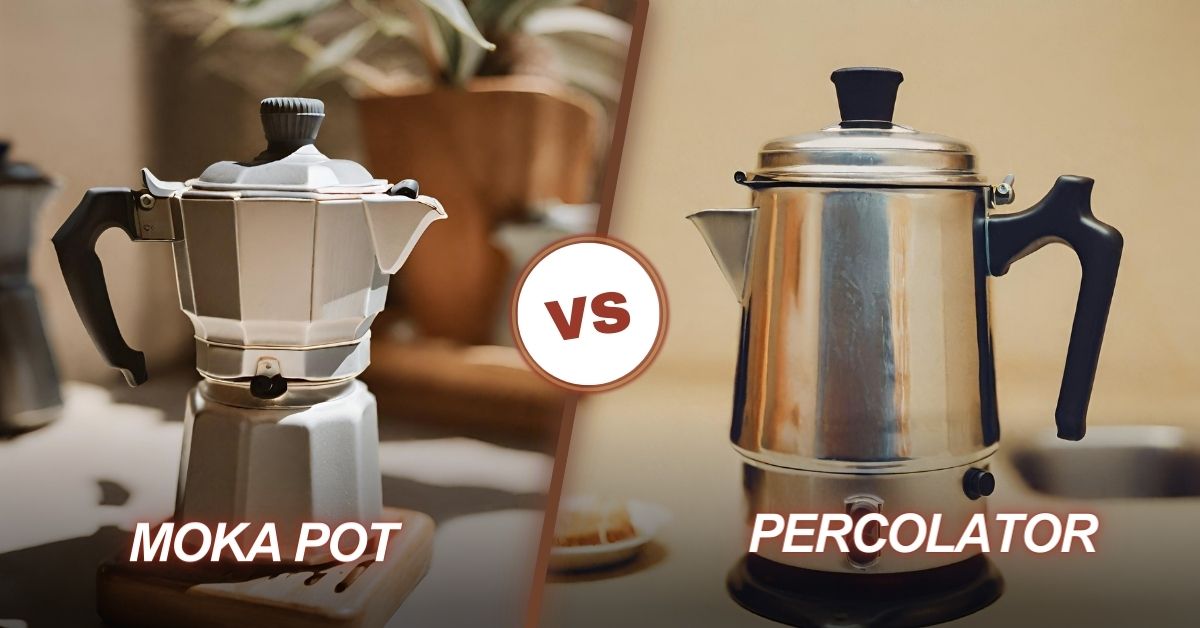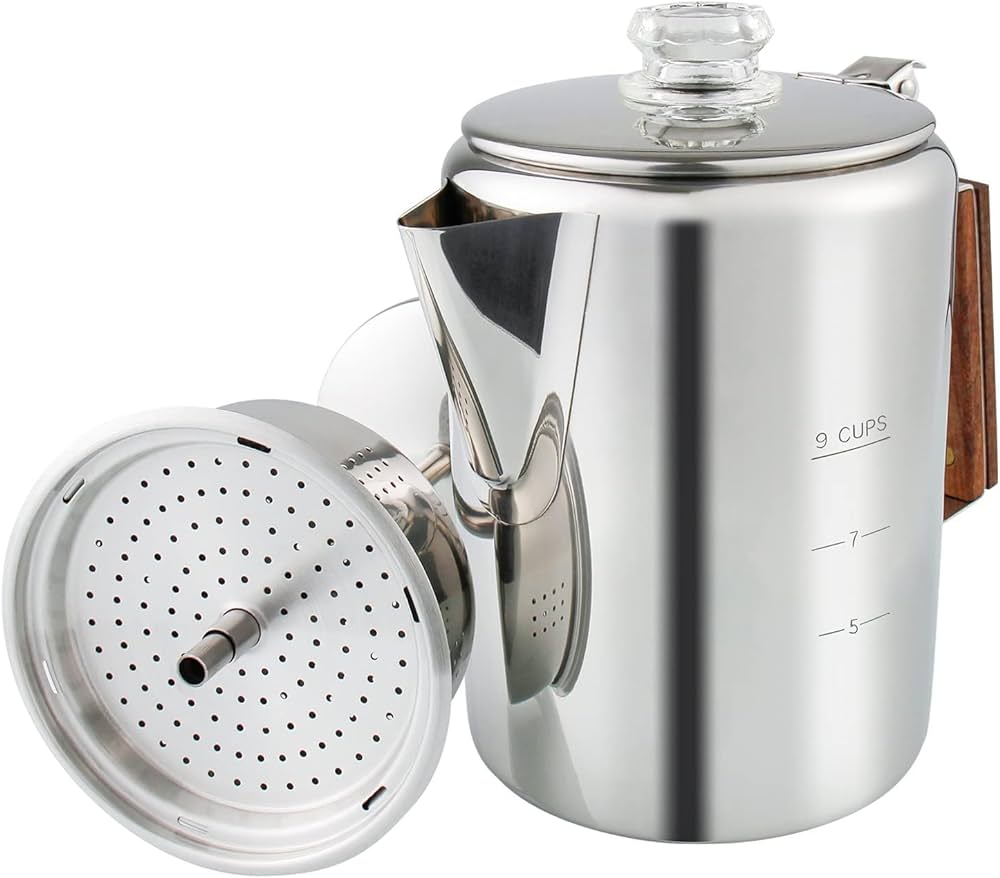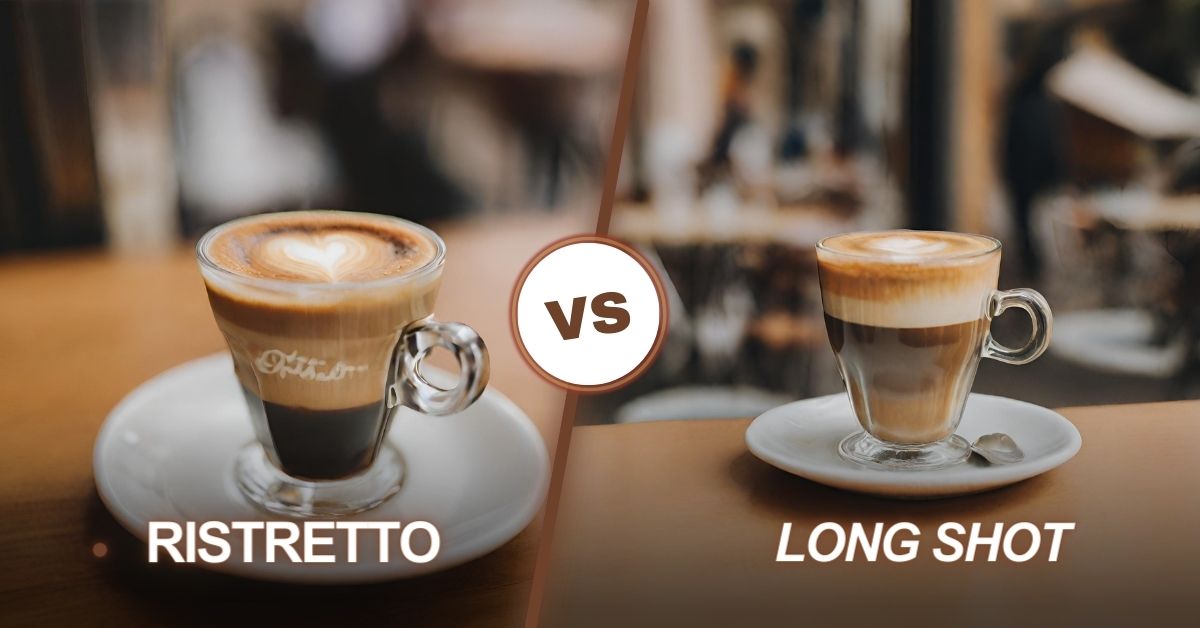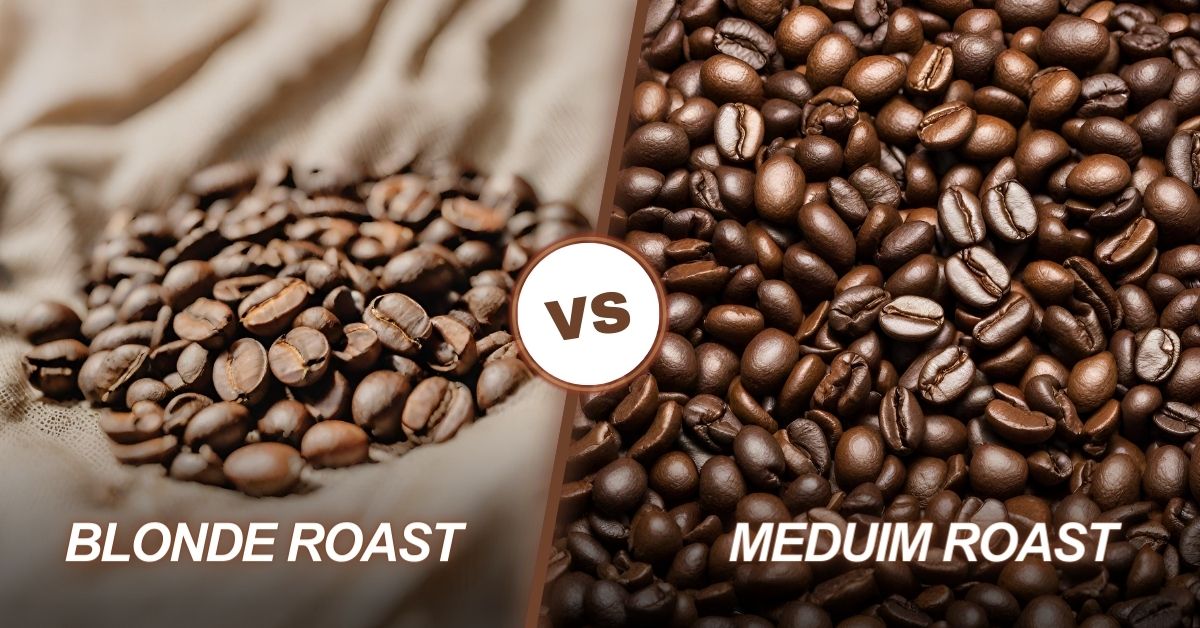Moka Pot vs Percolator: Which Delivers the Best Brew?

Percolators and moka pots may appear very similar, or even function further (on a stovetop) but they without a doubt brew espresso in very unique approaches. And the coffee they produce tastes particularly one of a kind, too.
Aside from being strong, the espresso made with either brewer can taste very special. Since they both have a similar, old-school design aesthetic, it is easy to mistake one for the other when you’re searching out a coffee brewing system.
This article delves into Moka Pot Vs Percolator, their unique qualities, from their invention to their operation, and from their taste profiles to ease of use, helping you navigate the waters of traditional coffee brewing methods.
What is Moka Pot?
The Moka pot, often celebrated as a stovetop espresso maker, encapsulates the essence of brewing sturdy, coffee-style espresso right from the consolation of your kitchen.
This elegantly designed tool is designed for its compactness and smooth appearance.
It is the brainchild of Alfonso Bialetti. An invention that lines back to early 20th century Italy, the Moka pot has become a staple in households worldwide, revered for its ability to extract espresso with a rich and sturdy taste.
Characteristics:
- Typically made from aluminum or chrome steel with a unique octagonal form for even heat distribution.
- Utilizes steam pressure to force boiling water through coffee grounds, creating a concentrated brew.
- Comprises a bottom chamber for water, a middle clear-out basket for coffee grounds, and a top chamber in which brewed espresso collects.
- Compact and durable, suitable for numerous heat assets which include fuel and electric-powered stovetops.
- Available in sizes ranging from one to 12 espresso cup capacities.
- Simple operation, requiring a few practices to best brewing technique.
- A lower-priced alternative to highly-priced espresso machines.
- Produces robust, wealthy espresso with an intensity much like espresso.
Pros
- It brews a robust, delicious coffee with a splendid aroma.
- Easy to use.
- Budget-friendly.
- Durable and stands the test of time
- Can brew flavorful espresso-style espresso without a coffee system.
Cons
- Can’t brew big batches.
- It requires a professional man or woman to brew the correct cup.
- Doesn’t fulfill milder coffee choices.
- Tough to smooth
- Lacks portability.

How does Moka Pot brew coffee?
The Moka pot is celebrated for its intuitive and progressive design, putting it aside as an extraordinary preference for brewing espresso. It is ingeniously dependent into three most important sections:
- A decrease chamber for water.
- A valuable filter-out basket designed to hold the finely ground coffee.
- A higher chamber wherein the freshly brewed coffee accumulates.
The brewing technique in a Moka pot operates on a bottom-up technique. As the water in the decrease chamber is heated, it generates steam stress.
This strain then propels the recent water upwards the densely packed coffee grounds within the center chambeheTt is a richly flavored and concentrated espresso that is then accumulated inside the higher chamber, geared up to be served.
This efficient mechanism guarantees that every brew is both deeply fragrant and flavorfully severe, embodying the essencnicely crafted coffee without the complexity of conventional coffee machines.
When should you use the Moka pot coffee maker?
It is a versatile tool that’s perfect for various occasions, making it a great choice for coffee lovers who appreciate rich and flavorful coffee.
The Moka pot is celebrated for its intuitive and innovative layout, placing it apart as a terrific preference for brewing espresso.
It is ingeniously established into 3 foremost sections: a lower chamber for water, a principal filter basket designed to maintain finely floored coffee and an upper chamber in which the freshly brewed coffee accumulates.
If you crave espresso that has robust and severe flavors, you then should go for the moka pot method. It caters to those who respect the bolder aspect of coffee with a sturdy aroma and a touch of crema, just like espresso.
What is Percolator?
A percolator is a form of espresso maker that brews espresso by way of constantly cycling boiling water through coffee grounds with the use of gravity until the favored espresso electricity is reached.
This manner entails water being heated in a bottom chamber, then rising a tube, cascading over a basket of espresso grounds, and finally dripping back down into the bottom chamber to repeat the system.
Percolators are available in the following types: Stovetop and electric-powered. Stovetop percolators require a warmness supply like a stove or campfire, making them popular for outdoor use or traditional kitchen setups.
Electric percolators, however, have integrated heating factors and are frequently used for convenience in domestic and office settings.
Characteristics:
- Circulates water through grounds for wealthy taste.
- Ideal for brewing espresso for companies.
- Simple to use and perform.
- Made from substances like chrome steel.
- Stovetop and electric-powered fashions are available.
- Allows adjustment of brew energy.
- Offers a traditional coffee-making revel in.
- Straightforward preservation.
Pros
- Durable and lasts longer
- Appropriate for brewing large batches
- Available in both stovetop and electric models
- Brews a classic, mild-tasting coffee
Cons
- This leads to bitter coffee due to over-extraction
- Challenging to clean
- Not so portable.

How does the percolator brew coffee?
The percolator utilizes straightforward bremechanismsmlly divided into 3 principal components:
- The decrease chamber in which water is heated.
- A middle basket full of coffee grounds.
- A higher section wherein the brewed espresso collects.
By setting the percolator on a warmness source, the water inside the lower chamber warms up, generating steam and strain that propels the water upwards via a tube.
This water then frivolously disperses over the grounds in the middle basket through a perforated lid, permitting the brewed coffee to cycle constantly through the grounds and go into reverse, enriching the flavor till the brew reaches the desired potency.
When should you use the Percolator coffee maker?
It is especially proper for people who appreciate the undying attraction of espresso brewed traditionally.
It shines while making coffee in large volumes, catering to gatherings or everyday consumption for a couple of coffee drinkers. It is simple to apply and produces easy, consistent coffee.
Difference between Moka Pot Vs Percolator:
| Feature | Moka Pot | Percolator |
| Brewing Method | Uses pressure from boiling water. | Cycles boiling water through grounds. |
| Coffee Strength | Produces strong, espresso-like coffee. | Brews robust, less concentrated coffee. |
| Taste Profile | Rich and bold. | Can be more bitter due to recirculation. |
| Capacity | Smaller, from 1 to 12 espresso shots. | Larger, suitable for groups. |
| Ease of Use | Simple operation with practice. | Straightforward, and easier for large batches. |
| Material | Typically aluminum or stainless steel. | Commonly stainless steel. |
| Heat Source | Stovetop (some electric models available). | Stovetop or electric. |
| Portability | Compact and portable. | Larger, less portable. |
| Maintenance | Requires careful cleaning. | Generally easy to clean. |
| Price | Affordable. | Varies, are generally affordable. |
Read Also:
- Top 5 Best Low Acid Coffee K Cups for Gentle Brews
- Top 5 Best Costco Coffee Brands: Perfect Picks for Every Palate
FAQs:
Is a moka pot higher than a percolator?
Moka pots give you the risk to brew rich and balanced pictures of concentrated coffee.
Percolators, lamentably, have a tendency to provide sour espresso that lacks nuance or complexity, thanks in large part to the first-rate excessive brewing temperature.
Does Moka pot waste espresso?
Now to the “internal values”: Coffee grounds, which can be left over whenever you use your coffee pot, do not need to be discarded right away
Is the aluminum Moka pot secure?
Another aspect that many humans do not like approximately aluminum is that, at excessive temperatures, aluminum offers some metallic flavor to the espresso produced.
These levels of aluminum leaching out of the moka pot are secure for human consumption however they affect flavor.
What is better than a moka pot?
Moka pots brew espresso the usage of some intense strains, however only 1-2 bars. This is greater than most people can generate manually however it does not rival that of an espresso gadget.
Modern espresso machines brew the use of eight-10 bars of pressure. That’s 5-10 times the strain of a moka pot, depending on the system.
Conclusion:
The choice between a Moka pot Vs percolator isn’t pretty much coffee; it is approximately the enjoyment and ritual of brewing.
Whether you pick the robust, bold flavors of a Moka pot or the gentle, nuanced brew of a percolator.
Both methods provide a gateway to exploring the rich and sundry international of coffee. Ultimately, the fine coffee maker is the one that suits your flavor, way of life, and coffee brewing philosophy.
In navigating this undying debate, take into account what you feel maximum to your coffee experience whether it is the ritual, the flavor, the quantity, or the ease.
By exercising the unique features of every brewing method, you’re nice in your manner of creating coffee it’s not only a drink, but an experience.




